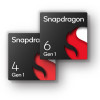T-Mobile Details Plans to Keep its Lead in Mid-Band 5G Through 2023
Dec 1, 2021, 4:43 PM by Rich Brome @richbrome
T-Mobile recently announced that its mid-band 5G network now covers over 200 million people, a threshold that the industry acknowledges as "nationwide" coverage. (Mid-band 5G offers an ideal balance of fast data speeds and broad coverage compared to 5G in other bands.) In an interview with Phone Scoop, T-Mobile executives detailed how they plan to maintain the company's lead in mid-band 5G even as Verizon and AT&T launch mid-band 5G early next year. According to Ryan Sullivan, VP, Device and Technology, and Karri Kuoppamaki, SVP, Network Technology Development & Strategy, T-Mobile plans to expand mid-band 5G coverage to 250 million people by the end of 2022. That will further expand to 300 million "in the next two years". The company has already launched 5G CA (Carrier Aggregation) across its low- and mid-band 5G networks, allowing users to experience faster data speeds by accessing both bands simultaneously. Now, the company is working to enable 5G CA within its mid-band frequencies, allowing customers to access over 100 MHz of mid-band bandwidth at once, for even faster data. The executives also revealed that the company is "deep" into testing VoNR and expects to launch that technology soon. VoNR allows voice calls to take place over 5G, which in turn will enable customers to access 5G in SA (stand-alone) mode across the whole network. Currently, T-Mobile is only using 5G SA technology to expand 5G data coverage into areas where 5G NSA (non-stand-alone) is not feasible due to specific local frequency band constraints. VoNR is also a critical step toward the eventual phase-out of 4G LTE, although the executives stressed that that phase-out is far in the future.
source: T-Mobile
Comments
Why 5G Is Important
The Achilles heel of LTE is that it does not handle calling very well when compared to CDMA. Therefore, one is less likely to connect a call during peak voice traffic or at large public gatherings. Big telecoms like Verizon and Sprint decided to make concessions a few years back in order to consolidate RF and gain better data speeds than they could attain with a CDMA-based system. This is not to say that CDMA was perfect. It's Achilles' heel was the slot cycle index, which occasionally caused missed calls...
(continues)


 Samsung Refreshes Galaxy S Series with S Pen, New Cameras
Samsung Refreshes Galaxy S Series with S Pen, New Cameras
 iPhone 14 Plus Offers a Big Screen For Less
iPhone 14 Plus Offers a Big Screen For Less
 Qualcomm Intros Snapdragon Chips for 2023's Mid-Range & Affordable 5G Phones
Qualcomm Intros Snapdragon Chips for 2023's Mid-Range & Affordable 5G Phones
 Samsung Puts its Best Camera Yet in the Galaxy S23 Ultra
Samsung Puts its Best Camera Yet in the Galaxy S23 Ultra


